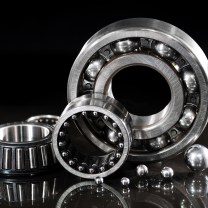
The strength, durability and dimensional stability of steel components after processing affects the reliability of the component in service. Retained austenite content is critical to these properties. Materials testing can quantify the amount of retained austenite present in a steel component.
Retained Austenite Analysis
We conduct analysis in the lab and the field by measuring two distinct austenite and martensite peaks each (four different Miller indices). This four peak method exceeds the requirement of ASTM and SAE, and it allows for carbide interference corrections. The result is more precise measurement, which in turn will help you avert both safety issues and profit loss.
Using four distinct peaks also provides indication of large grain size and preferred orientation of the grains. This insight provides additional metallurgical information about the steel component. Our proven track record for high quality results, delivered quickly and efficiently, will make the process as easy for you as possible.
X-Ray Diffraction with Less Sectioning
As the technique recognized for being most accurate at analyzing retained austenite levels, x-ray diffraction is uniquely capable of detecting small amounts (less than or equal to 2%) of retained austenite. We use our own TEC 4000 X-Ray Diffraction System and MAX- portable solutions with centerless diffractometers that can measure large and irregularly-shaped parts in the lab or in a production environment. This means that your large and irregularly shaped components can be tested with zero to minimal sectioning, saving you time and money and allowing continued use of the parts.
